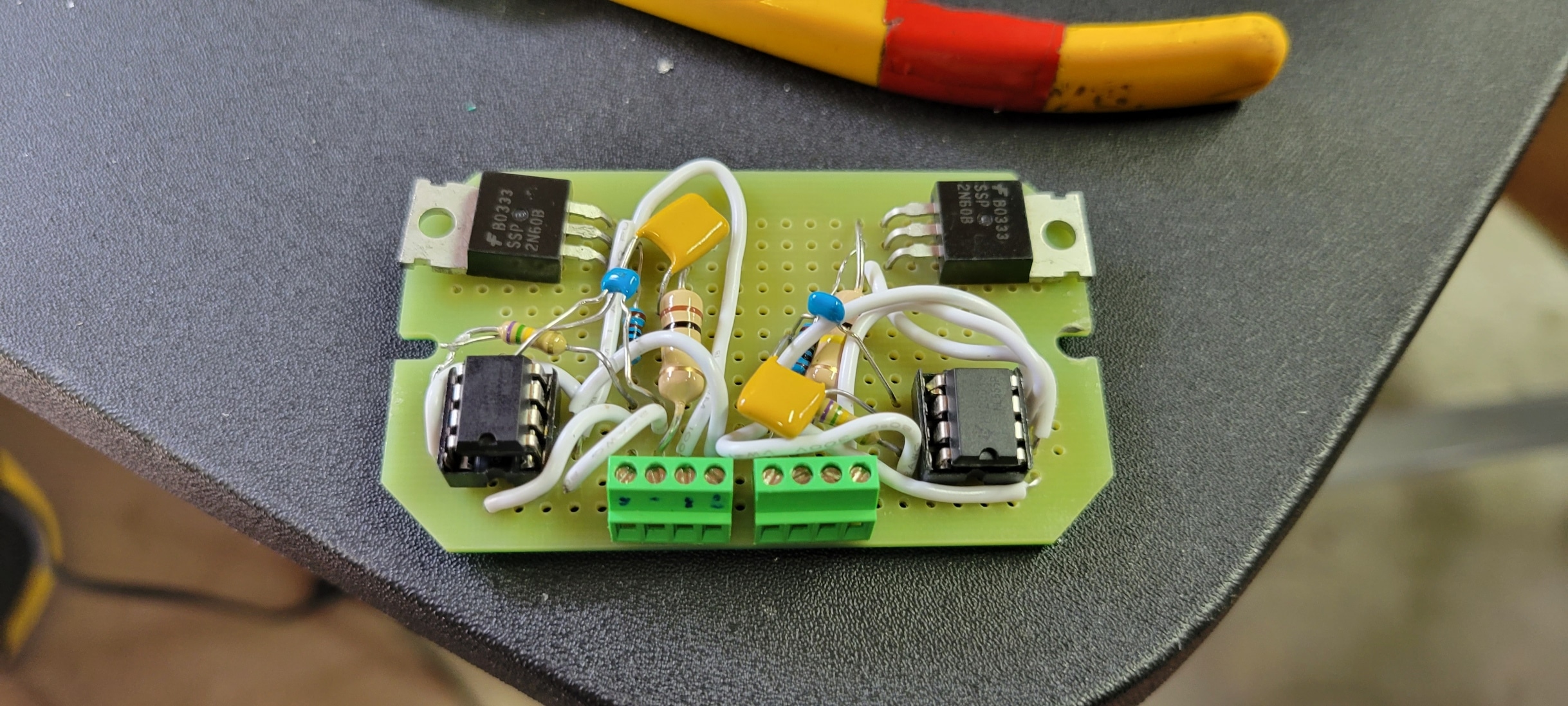
After walking away for a while from the challenge of getting SR3 operational, I came to the realization that it always was “operational.”
The bottom line is SR3 works and will be available for racing soon. Stay tuned for details on the next series at Stewart Raceway.
Read on for details. Otherwise, I hope to see you racing on SR3 soon…
To recap, the problem I was trying to solve was related just to fuel racing, which most of us prefer to old-school traditional slot racing. Yes, the track worked fine in all aspects except fuel racing.
So, I spent as much time as I could over a roughly 60-day period trying to solve the problem. Again, the hardware options for a six-lane, dual gantry track are very limited. Dual gantries for pit stops are the most desirable solution because just using a single lap count sensor setup is very difficult for most drivers to reliably and quickly trigger a pit entry and refuel.
So, I tried everything to resolve the technical shortcomings of Phidget cards, which are currently the only way to support dual gantries on a six-lane track using SlotTrak as the race management system. I even took a tremendous amount of time writing code for an Arduino microcontroller to capture the pit entry signals and pass them to the much slower Phidget card. This actually worked beautifully but the Phidget and Elexol relay cards that SlotTrak support generate too much EMI noise and interfered with the very sensitive Arduino card. A real bummer since that approach was the cheapest and most flexible solution to this type of problem.
So then I moved on to the Medanic Solution. Actually, Steve Medanic, the accomplished racer and controller genius, came up with a hardware solution for these very problems years ago. Unfortunately, I could not successfully build his circuit design and, after two attempts, called it quits on that option. Yes, Steve proved that it does work but I was unable to get my own circuits to work on my track. Steve is awesome when it comes to helping out but he was off traveling in Europe and obviously unable to help me resolve the build problems.
So I then moved on to the next possible solution which was a different and faster Phidget card. The 8/8/8 Phidget card has a much quicker Low Voltage Trigger time (4ms vs the 0/16/16’s 16ms). So the theory was that it might just catch the faster speeds that SR3 presents for pit entries. Unfortunately, the 8/8/8 card wasn’t a simple swap with the 0/16/16 card. It’s what is known as an active-low digital signaling device, the opposite of the active-high 0/16/16 card. Sounds simple enough but I could not get the 8/8/8 card to detect my IR sensor’s open logic levels (when a car passes under the gantry, the IR beam is broken and the output goes to zero volts). This was very frustrating but I could not find a way to terminate the sensor outputs that would trigger the 8/8/8 card.
So, all that said. I simply have given up on trying to “fix” the problem. Instead, I’m just going to live with it. In retrospect, it’s actually not really a problem. In full-scale racing, pit entry is always serial and speed regulated. The SR3 problem is related to high-speed pit entry, which is not how full-scale racing works.
In slot car fuel racing, drivers strive to time the fastest possible entry into the pit area. The larger the pit area, the easier that is to accomplish. This works well at Thunder Road Raceway and Stewart Raceway 2. Both tracks utilize a Trackmate SCL3 card for lap and pit entry/exit and generic 4-relay cards for individual power. The SCL3 card is specifically designed for slot car racing and has been refined over the years to the point of near perfection. Consequently, the card captures extremely fast sensor signals and works quite well.
This is not the case with Phidget cards. In fact, without Medanic’s hardware fix, the Phidget card is useless as a lap count detection device and marginally useful as a pit-entry detection device. Yes, it can work on small tracks or where the speeds through the sensors are relatively slow but will not detect a typical pit entry on SR3.
So, what does all this mean to you? Well, the bottom line is that you’ll just have to forgo the slick “quick drop” into the pits on SR3. You’ll have to slow way down prior to passing under the pit entrance gantry to trigger refueling. If you don’t, you’ll have to do another lap and enter again at the proper speed. Again, this is how full-scale racing works and, in my opinion, isn’t really a problem that should prevent us from enjoying fuel racing on SR3. Yea, it’ll be different than most tracks, including SR2. But it’s really just a characteristic of a new track right now.
Yes, I suspect this issue will be resolved at some point by new hardware, Medanic’s solution, or even the Arduino hardware/software solution. The reality is that I just don’t have any more time to spend on those possibilities and I want to get back to racing on both tracks–ASAP.
